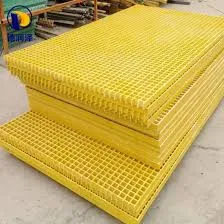
-
 Afrikaans
Afrikaans -
 Albanian
Albanian -
 Amharic
Amharic -
 Arabic
Arabic -
 Armenian
Armenian -
 Azerbaijani
Azerbaijani -
 Basque
Basque -
 Belarusian
Belarusian -
 Bengali
Bengali -
 Bosnian
Bosnian -
 Bulgarian
Bulgarian -
 Catalan
Catalan -
 Cebuano
Cebuano -
 China
China -
 China (Taiwan)
China (Taiwan) -
 Corsican
Corsican -
 Croatian
Croatian -
 Czech
Czech -
 Danish
Danish -
 Dutch
Dutch -
 English
English -
 Esperanto
Esperanto -
 Estonian
Estonian -
 Finnish
Finnish -
 French
French -
 Frisian
Frisian -
 Galician
Galician -
 Georgian
Georgian -
 German
German -
 Greek
Greek -
 Gujarati
Gujarati -
 Haitian Creole
Haitian Creole -
 hausa
hausa -
 hawaiian
hawaiian -
 Hebrew
Hebrew -
 Hindi
Hindi -
 Miao
Miao -
 Hungarian
Hungarian -
 Icelandic
Icelandic -
 igbo
igbo -
 Indonesian
Indonesian -
 irish
irish -
 Italian
Italian -
 Japanese
Japanese -
 Javanese
Javanese -
 Kannada
Kannada -
 kazakh
kazakh -
 Khmer
Khmer -
 Rwandese
Rwandese -
 Korean
Korean -
 Kurdish
Kurdish -
 Kyrgyz
Kyrgyz -
 Lao
Lao -
 Latin
Latin -
 Latvian
Latvian -
 Lithuanian
Lithuanian -
 Luxembourgish
Luxembourgish -
 Macedonian
Macedonian -
 Malgashi
Malgashi -
 Malay
Malay -
 Malayalam
Malayalam -
 Maltese
Maltese -
 Maori
Maori -
 Marathi
Marathi -
 Mongolian
Mongolian -
 Myanmar
Myanmar -
 Nepali
Nepali -
 Norwegian
Norwegian -
 Norwegian
Norwegian -
 Occitan
Occitan -
 Pashto
Pashto -
 Persian
Persian -
 Polish
Polish -
 Portuguese
Portuguese -
 Punjabi
Punjabi -
 Romanian
Romanian -
 Russian
Russian -
 Samoan
Samoan -
 Scottish Gaelic
Scottish Gaelic -
 Serbian
Serbian -
 Sesotho
Sesotho -
 Shona
Shona -
 Sindhi
Sindhi -
 Sinhala
Sinhala -
 Slovak
Slovak -
 Slovenian
Slovenian -
 Somali
Somali -
 Spanish
Spanish -
 Sundanese
Sundanese -
 Swahili
Swahili -
 Swedish
Swedish -
 Tagalog
Tagalog -
 Tajik
Tajik -
 Tamil
Tamil -
 Tatar
Tatar -
 Telugu
Telugu -
 Thai
Thai -
 Turkish
Turkish -
 Turkmen
Turkmen -
 Ukrainian
Ukrainian -
 Urdu
Urdu -
 Uighur
Uighur -
 Uzbek
Uzbek -
 Vietnamese
Vietnamese -
 Welsh
Welsh -
 Bantu
Bantu -
 Yiddish
Yiddish -
 Yoruba
Yoruba -
 Zulu
Zulu
Advanced FRP Duct System for Efficient Air Management
Understanding FRP Duct Systems A Comprehensive Overview
Fiber-Reinforced Polymer (FRP) duct systems have emerged as a vital innovation in various industries, particularly in the fields of construction, manufacturing, and environmental management. Comprising a combination of polymer resins and reinforcing fibers—often glass, carbon, or aramid—FRP duct systems offer numerous advantages over traditional materials like metal or concrete, making them increasingly popular for both new constructions and renovations.
Understanding FRP Duct Systems A Comprehensive Overview
Furthermore, FRP duct systems boast a lightweight design that simplifies installation procedures. Weighing considerably less than metal ducts, FRP systems are easier to handle and install, leading to reduced labor costs and shorter project timelines. Their flexibility allows for easier routing and modifications during the installation process, making them suitable for complex architectural designs and reconfigurations.
frp duct system

In terms of thermal performance, FRP duct systems offer excellent insulation properties. While traditional metal ducts can lose heat due to their conductivity, FRP materials have low thermal conductivity, thereby maintaining temperature consistency within the duct. This factor not only enhances energy efficiency but also contributes to improved indoor air quality by minimizing condensation and mold growth, a common issue associated with traditional duct systems.
Moreover, FRP is inherently non-conductive, providing an added layer of safety in electrical installations. This characteristic prevents issues related to electrical interference, making FRP duct systems particularly beneficial in settings where sensitive electronic equipment is utilized, such as data centers or healthcare facilities.
Environmental considerations are also a significant aspect of FRP duct systems. Being lightweight and durable, these systems contribute to lower transportation emissions and reduce the overall carbon footprint of construction projects. Additionally, many FRP products are manufactured using sustainable materials and processes, aligning with the growing emphasis on eco-friendly building practices.
In conclusion, FRP duct systems present a myriad of advantages that make them a superior choice for modern applications. Their resistance to corrosion, lightweight nature, excellent thermal insulation properties, electrical safety, and environmental benefits position them at the forefront of innovative building solutions. As industries continue to prioritize efficiency, sustainability, and cost-effectiveness, the adoption of FRP duct systems is likely to increase, setting a new standard for quality and performance in ductwork design and implementation. Whether for HVAC applications or other industrial processes, FRP duct systems represent a forward-thinking approach to ductwork that meets the evolving demands of today’s construction landscape.









